What is a Naan Sandwich?
The Wikipedia List of Sandwiches (all hail!), source of our inspiration, has this to say about naan sandwiches:
The Naan sandwich link redirects to the main page for Naan. The nation of origin listed is Pakistan. The description says “Beef on naan bread;” however, the example image is captioned “A vegetarian naan burger.” It is a puzzlement.
The Tacofication of Naan
Naan is a leavened flatbread popular in southern Asia. It is also delicious. Naan looks like this:
Back when I was working in River North, I used to frequent a “cabbie joint” called Baba Palace (sadly, it is no longer open). The food there was cheap and plentiful, served either with a rather large plate of rice or a piece of naan bread. Whether I was ordering a mutton masala or chili chicken, I always opted for the naan. Mostly I’d do what most people to with naan, tear pieces off of it and use them to scoop up bits of meat and sauce from the curry I was eating, much like one does with Ethiopian injera bread (though the two breads are quite different). Occasionally, I would instead cradle the curry in the whole naan, along with some raita and perhaps a few diced onions, to make a kind of Indian taco.
The naan wrap concept has gone past the DIY stage, having been served at food trucks like Chicago’s former Gaztro-Wagon and its successor churrinaan.com (though the Indian influence in their offerings seems to begin and end with the bread) and Washington DC’s Naan Stop, and has now been given the Chipotle treatment with Chicago’s Naansense.
Naansense’s ordering system follows a familiar pattern–choose your base, choose a protein, choose a sauce and toppings, then pay and scurry back to your office to eat at your desk. (Do not eat these at your desk. They require many napkins.) Sadly the naan is very flour tortilla-like and the “naan tacos” don’t fare well on a brisk 3-block walk in November, but the place is a nice change of pace and I may give them another shot one day.
Still, as scant as the description of Naan Sandwich is, I don’t think this is what we’re looking for.
Naan on Devon
As mentioned earlier, the Wikipedia List specifies that this sandwich is Pakistani in origin. If you want to learn about a Pakistani sandwich, you go ask a Pakistani. So it was that the lovely Mindy (who is more often than not talked into accompanying me on such excursions) and I found ourselves parked just off California and Devon in Chicago, near the far west end of the Desi Corridor, in search of a restaurant that might serve a sandwich made with naan bread.
For about a mile stretching from California Avenue in the west to Ravenswood in the east, Chicago’s Devon Avenue boasts one of the more dense and better known concentrations of the culture of the Indian subcontinent in North America. While there are also other cultures represented (Russian, Orthodox Jewish, Georgian), in large part the shops and restaurants are Indian or Pakistani. So it didn’t take long for us to find someone to ask.
Meerath Kabab House has never been on my radar, and I stopped in only to look at the menu and ask about naan sandwiches, but we found ourselves seated with water and a relish plate in front of us before I could think to politely decline, so I perused the menu while Mindy looked up Yelp reviews. These at least were promising, not in the level of praise (which had a fairly Yelp-standard range of 5-star “BEST EVER” and 1-star “WORST EVER” reactions) but in that she found something that looked very much like a kabab or burger patty in a folded-over naan. Unfortunately when we asked about it we were told that they no longer had that on the menu. Our waiter did suggest, however, that I might like to try one of their rolls with naan instead of paratha, so I ordered a behari kabab roll while Mindy, anticipating a grueling afternoon ahead, kept it light with an order of fries.
I… did not care for this, I’m sorry to say. The kebabs were quite wet–they didn’t taste bad, but the texture was offputting, and the flavor was overwhelmed by the abundant thick slices of onion. The menu says the roll is served with tamarind chutney and “yogurt curt.” If you look very closely at the photo above, in the background, you might see a small dish containing some kind of white substance. I’m pretty sure it was Ranch dressing. (To be honest, there was tamarind sauce and raita on the relish plate. Still, if you put Ranch dressing on my plate you have called down the thunder)
Moving along eastward, we made our way to a well known Pakistani restaurant called Sabri Nihari, where I had the presence of mind to ask about naan sandwiches before being seated. I was told, kindly, that they did not serve sandwiches, and that I might have better luck at a sweet shop. As it happened, we had just passed one. Sabri Nihari looked beautiful and smelled delicious, but would have to wait for another day. We backtracked to Kamdar Plaza.
“Sweet shop” is a bit of a misnomer, as the sweet shops along Devon sell a number of savory treats including samosas the size of your fist (my favorite, especially with the spicy chili chutney and the sweet/sour tamarind chutney). We stopped in and asked about sandwiches at the counter. Interestingly, the man helping us only mentioned a veggie sandwich on sliced bread, when I could see that the menu contained both “Pav Wada” and another favorite of mine, Dabeli, which is a spicy potato paste served with chutneys, peanuts, and pomegranate pips on a Pav or burger bun.
It was a bit of a revelation, though I’ve seen this in other cultures. In Britain, “sandwich” often only refers to fillings between sliced bread, while something on a bread roll might be called a roll or bap or barm. In Australia, anything hot served in a bread roll is generally referred to as a burger. Was it possible that this culture would not even consider a naan sandwich to be a sandwich?
Heading westward toward the car with a bag full of snacks from Kamdar, we made our way past California Avenue and the traditional border of the Desi corridor to one last restaurant we wanted to try, Anmol Barbeque.
Once again, our Pakistani host denied any knowledge of sandwiches made with naan, though he cheerfully steered me toward their menu items under the “Bake and Roll” category, essentially paratha wraps. I ordered a chicken botil roll, while Mindy ordered their mango habanero chicken with garlic naan.
My chicken botil roll was great, spicy chicken wrapped in a flatbread far better suited to the purpose than a naan would be, but Mindy got by far the better end of that deal. Her habanero chicken, served on a sizzling plate with deeply browned cooked onions, was perfectly cooked, bright, hot, and sweet, while the garlic naan, bubbled and blistered and festooned with bits of minced garlic and scallion, was a fantastic piece of bread.
We ate some great food, but I couldn’t help feeling that our trip to Devon was a bust. We still hadn’t found anything fitting the description of naan sandwich, not even the piece of mango habanero chicken I ate on the piece of garlic naan I was able to talk Mindy out of.
The Discovery of Non-Naan
It wasn’t enough. I kept searching online, looking for some kind of “authentic” naan sandwich. I mean, there are plenty of hipster foodie types and healthy living types on the internet making plenty of naan wraps and paninis, with roasted veggies, goat cheese, falafels, what have you. And while I agree with people who argue that in terms of food, authentic doesn’t necessarily mean delicious, I’m looking for the real deal here. That’s kind of the whole point.
Finally I turned to Youtube, and in my searches, I kept coming across this video, though it doesn’t specifically mention naan.
Curious, I asked Jane Borges, who interviewed some Tribunal writers for the Mid-Day publication in Mumbai last year, about this bread. Could it be that this was some form of naan? Was naan more of a generic term for bread that could take many specific forms?
She was pretty sure it wasn’t–she called the bread a type of pav, but promised to check with the food writers on staff to verify. Eventually the answer came back–they concurred that this was a pav.
Still, I persisted in clicking through videos, finding out more about this Mumbai street food. The filling was a thick masala made with mutton and potatoes, though some recipes were out there for chicken versions as well. Finally, following the YouTube rabbithole further and further down, I found that this sandwich has a name: naan chaap.
So it was naan after all! Or was it? It sure didn’t look like any naan I was used to. My google searches showed that there were breads called naan that did not resemble traditional tandoori naan, such as the variant developed by the ethnic Indian community in Durban, South Africa, but this was straight out of Mumbai.
I was talking through this conundrum with my sons when 17-year-old Max quipped, “So it’s non-naan?”
“I’m using that,” I responded.
Naan Chaap
The recipes for naan chaap all have some similarities. They start with boiling the meat, usually in a pressure cooker, with ginger/garlic paste and a little salt, until the meat is falling apart. The sauce starts with cooking onions down until soft, then adding various spices–turmeric, coriander powder, powdered red chili pepper, black pepper, chopped fresh chilies, and sometimes cumin–before adding diced tomato and some green herbs, usually cilantro and mint. The meat, boiled and smashed potatoes, and the masala mixture are then combined and cooked down until they have a spreadable texture.
So that’s what I did.
Beef Masala for Naan Chaap
Ingredients
- 2 lbs stew beef
- 2 tbsp ginger/garlic paste
- 1 tsp kosher salt
- 1/2 cup water
- 2 tbsp butter
- 3 onions diced finely
- 2 tbsp Kashmiri chili powder
- 2 tbsp coriander powder
- 1 tbsp cumin powder
- 1 tsp black pepper
- 2 tsp turmeric
- 4 long green Indian chilies chopped
- 1 15 oz can diced tomatoes drained
- 2 tbsp each chopped cilantro and mint
- 4 Yukon Gold potatoes boiled and smashed to chunks
- juice of 1/2 lemon
- salt
Instructions
- Add the beef, water, ginger/garlic paste, and 1tsp kosher salt to a Dutch oven. Bring to a boil, cover, reduce to a simmer, and let it cook until the beef comes apart easily, around an hour or two. Make sure the pan doesn’t completely dry out–add water if needed.
- Meanwhile, melt the butter in a separate pan and saute the onions until they are soft and beginning to brown.
- Add the spices and cook a few more minutes until fragrant.
- Add the tomatoes and cook until they have disintegrated.
- Add the green chilies, cilantro, and mint. Cook a few more minutes.
- Add the potatoes and stir to combine well.
- When the meat is ready, use the edge of a wooden spoon or a potato masher to separate the chunks into strands as much as possible, then mix the meat into the masala/potato mixture.
- Add the lemon juice and cook until the mixture has reached the desired spreadable consistency. Salt to taste.
The problem is, what are we going to put this in? I’ve never seen naan that look like the naan in those videos, and yet the recipes reference them as if they are commonplace. I have not found one that shows a recipe for the actual bread.
So being the clever boy I am, I used the NYT recipe for naan dough and instead of stretching it out to make a flatbread, I rolled it between my hands to shape it like hamburger buns, then smashed it down before the final proof and bake.
I think they turned out OK
After that, assembling the naan chaap was no trouble at all. Slice a bun in half, butter it both inside and out, and brown it in a griddle.
Careful spreading the masala on it though. The buns are hot.
Let me tell you: I am a fan of this sandwich. To look at it, it seems fairly simple, just one filling and a bun. But it’s not necessary to know the level of effort that went into making it (not to mention researching it) to get that there’s a lot more going on than meets the eye. I’ve had more complex masalas than this, certainly, but there’s a lot of flavor here, and a spice level that might be challenging to the capsaicin-averse but is merely comforting to those who enjoy spicy foods. Though everything is mixed together to the point that the texture appears uniform, each bite might have some beef, held together by bits of potato, interspersed with sweet browned onions.
The bread rose a little higher than I’d have liked, but it was nice and crisp on the outside and on the griddled surfaces, soft and dense on the inside, and far richer than a hamburger bun would have been.
I don’t know if I got it right, or even close, but this sandwich quest did lead me to a reward that was worth the effort.

I like sandwiches.
I like a lot of other things too but sandwiches are pretty great



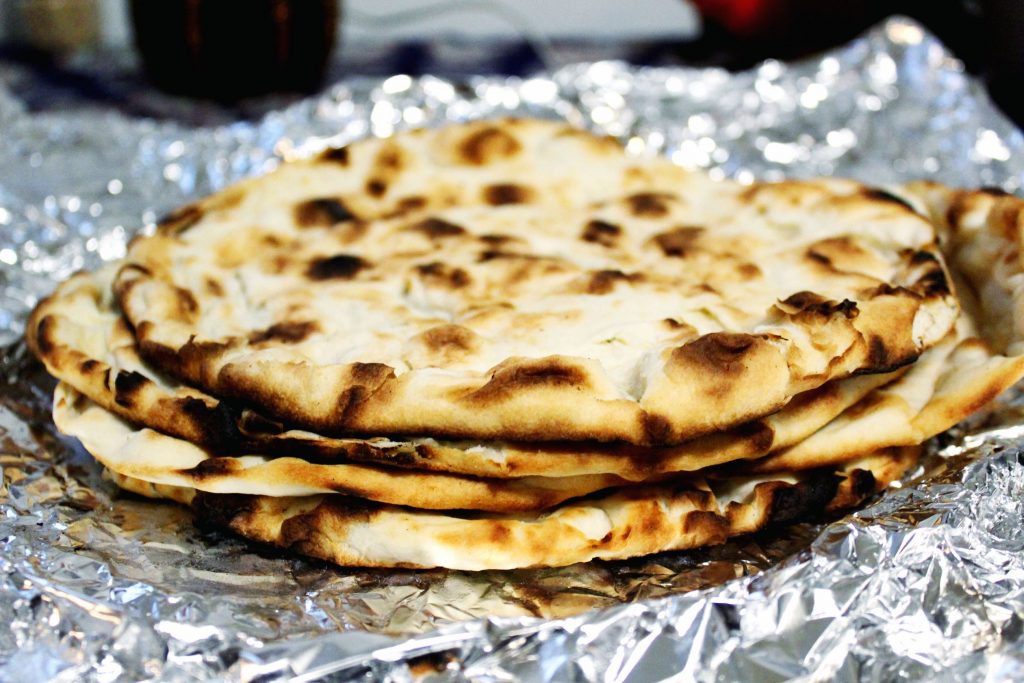
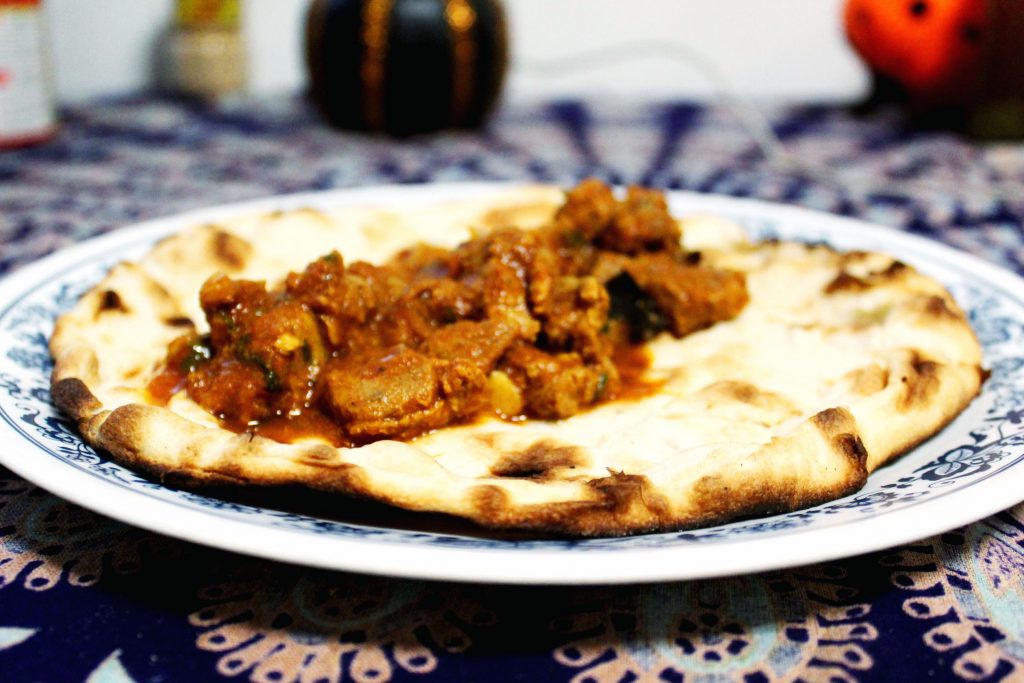
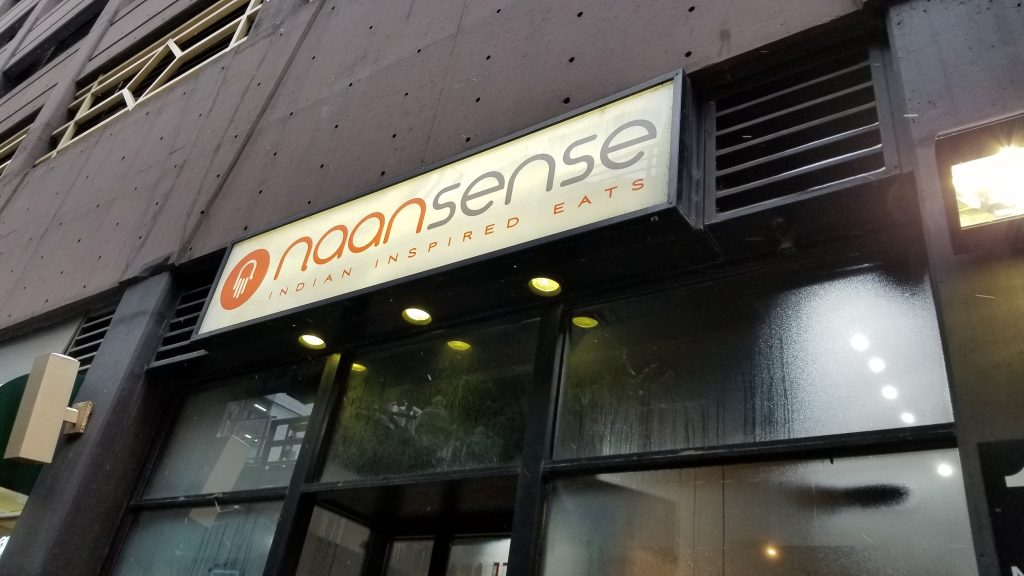
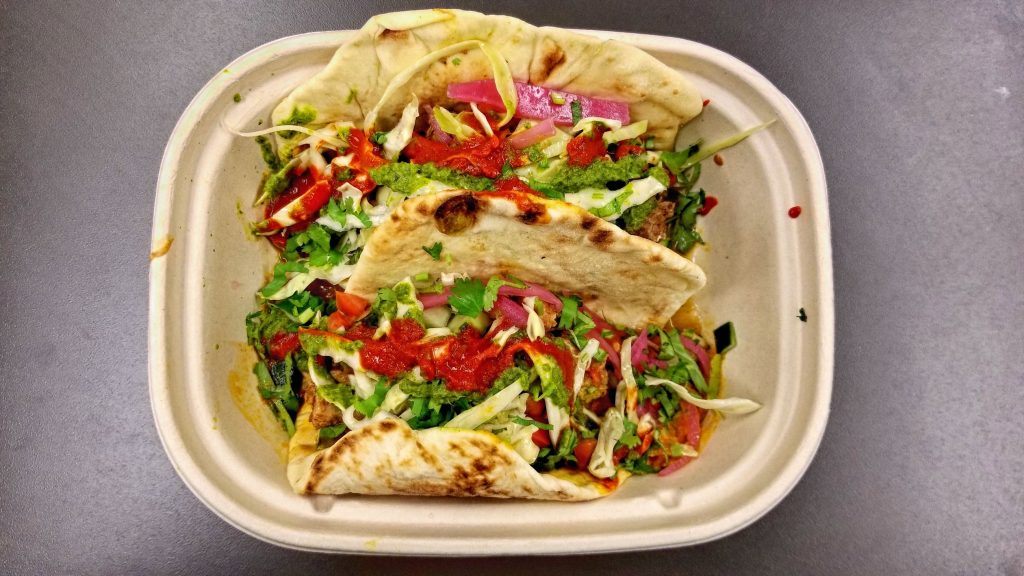
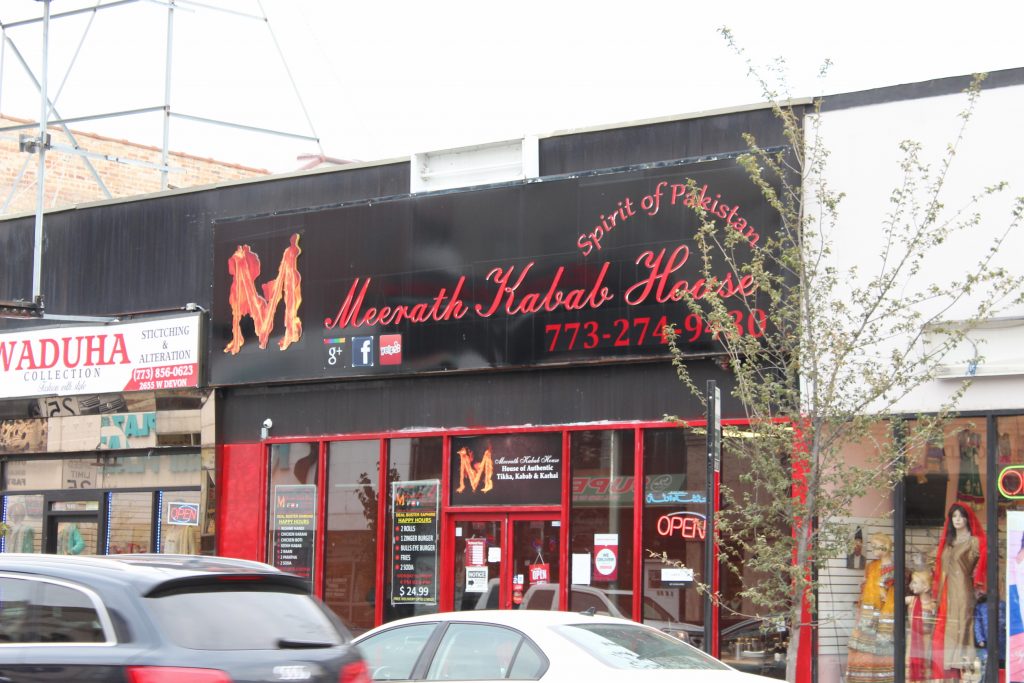
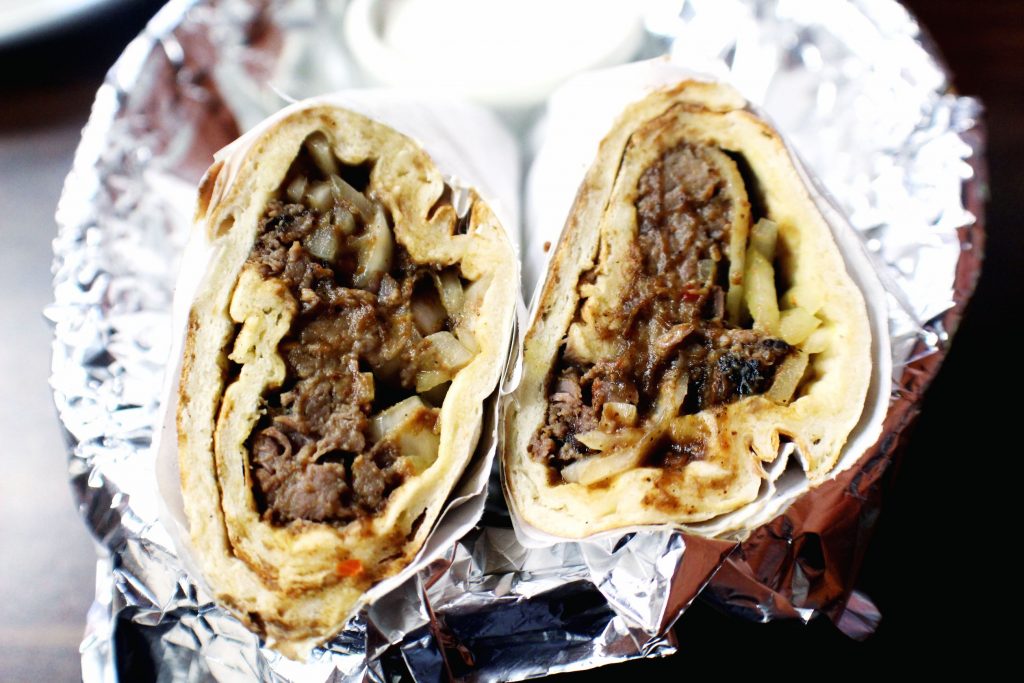
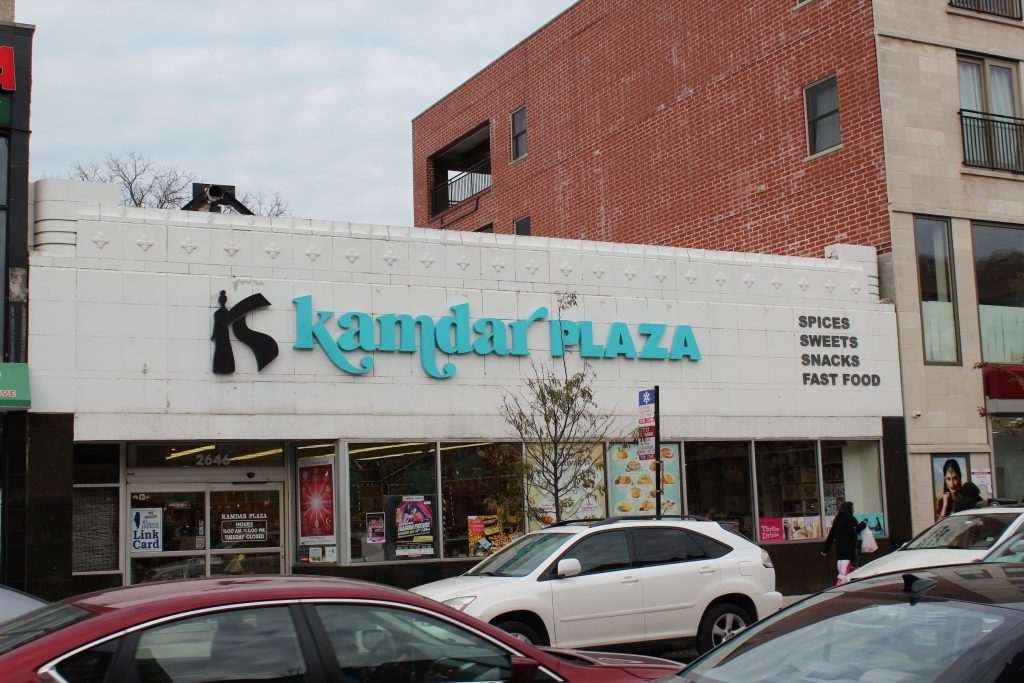
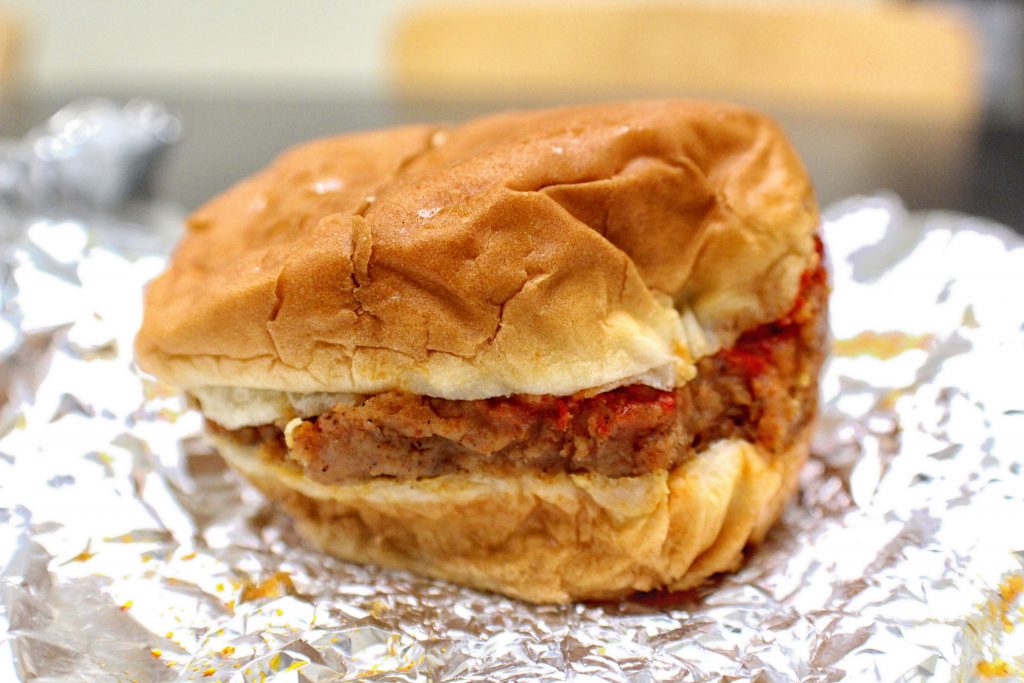
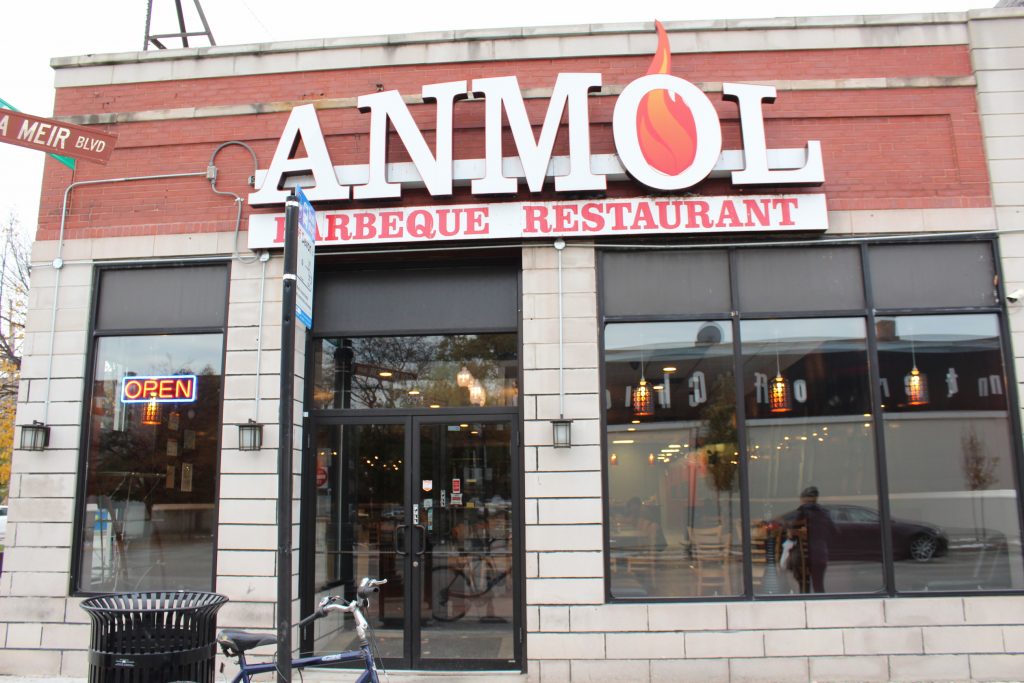



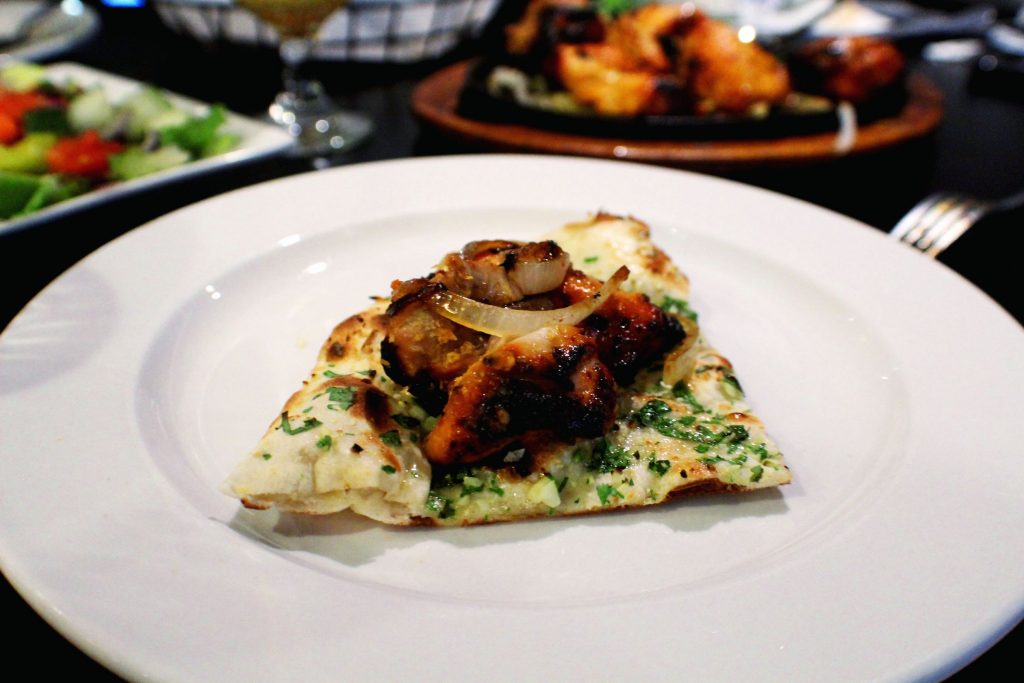
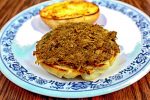
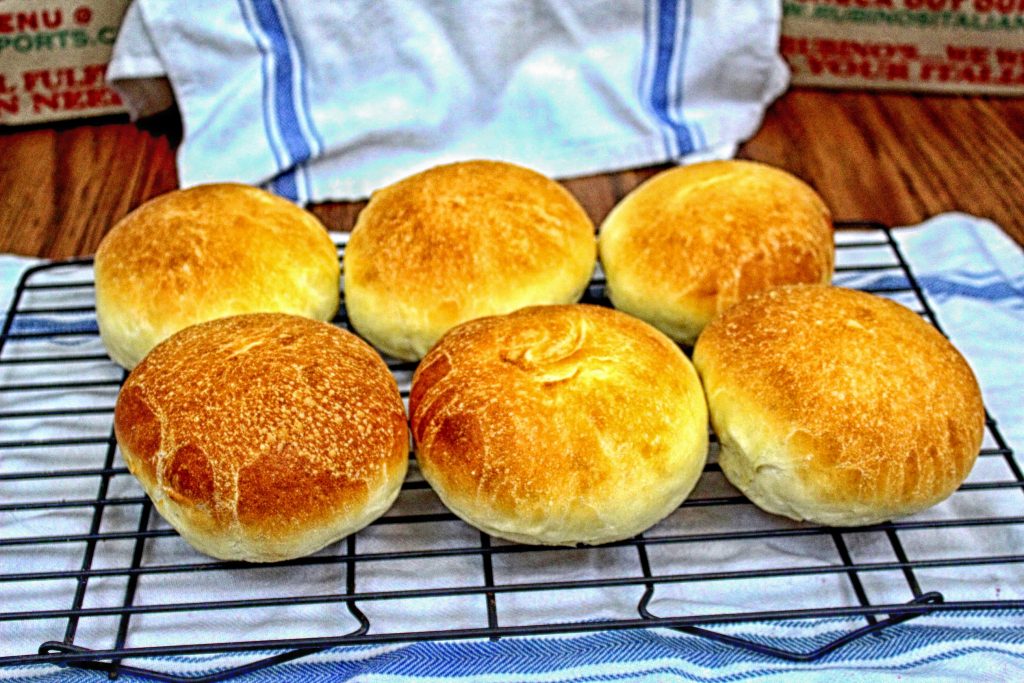
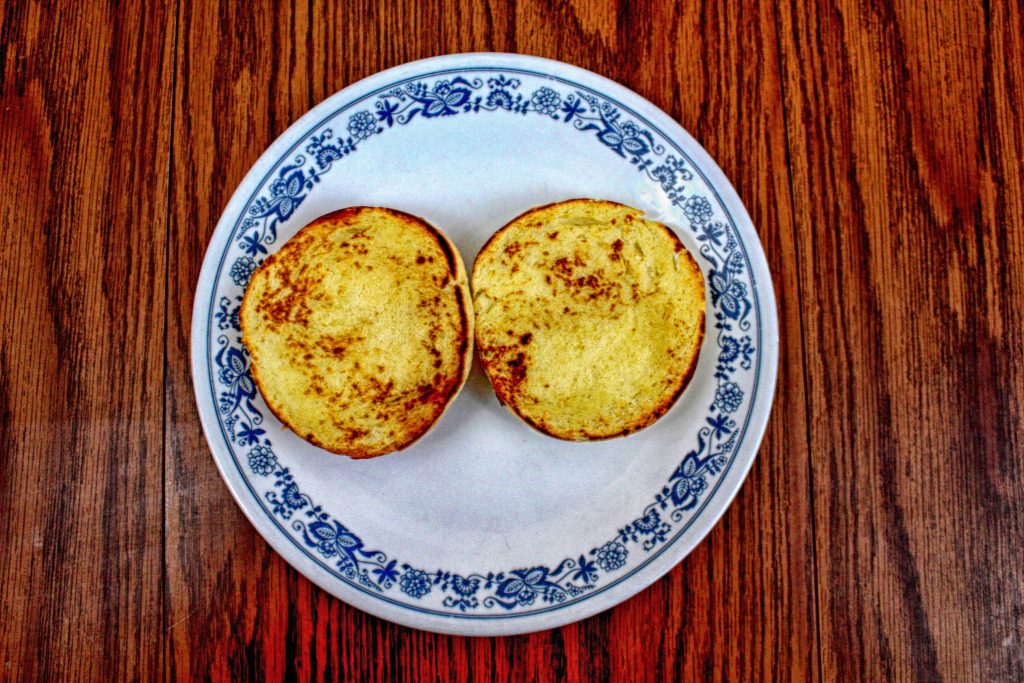
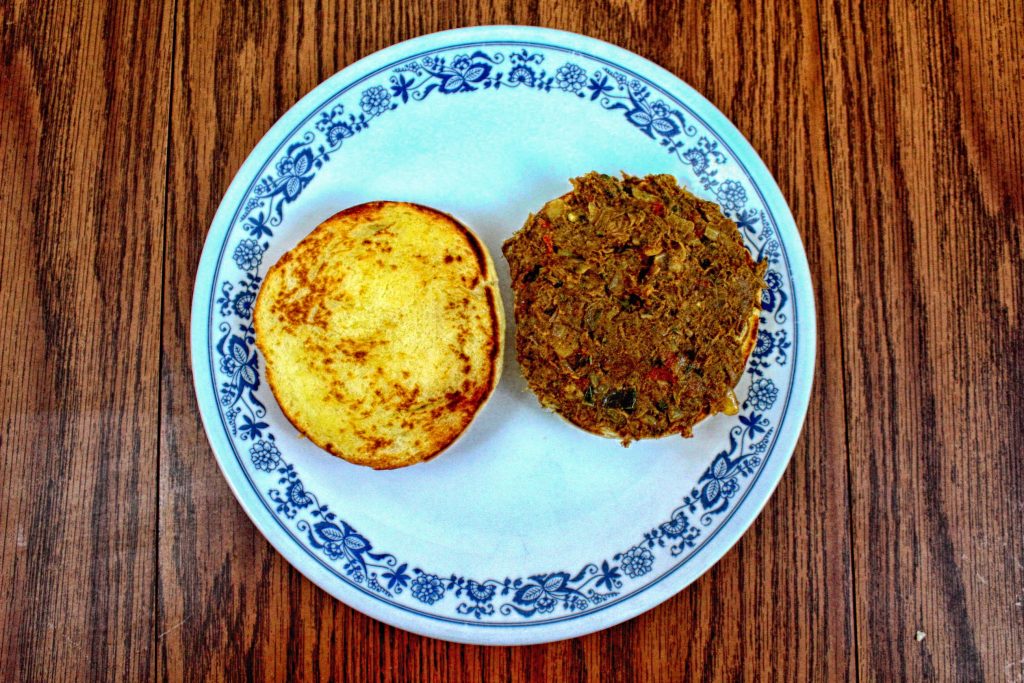
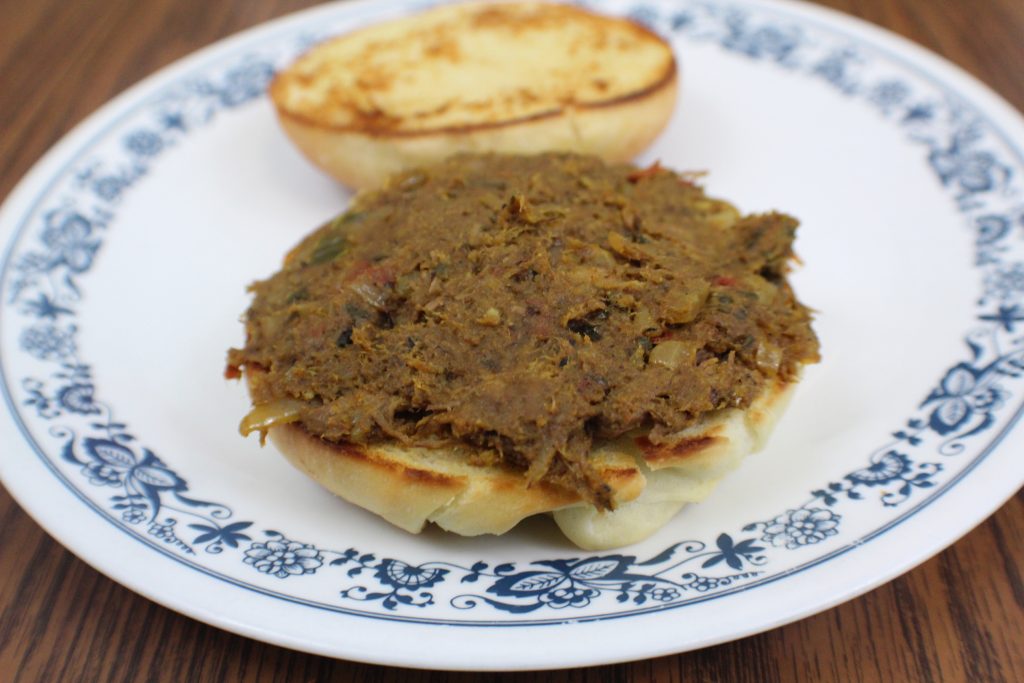
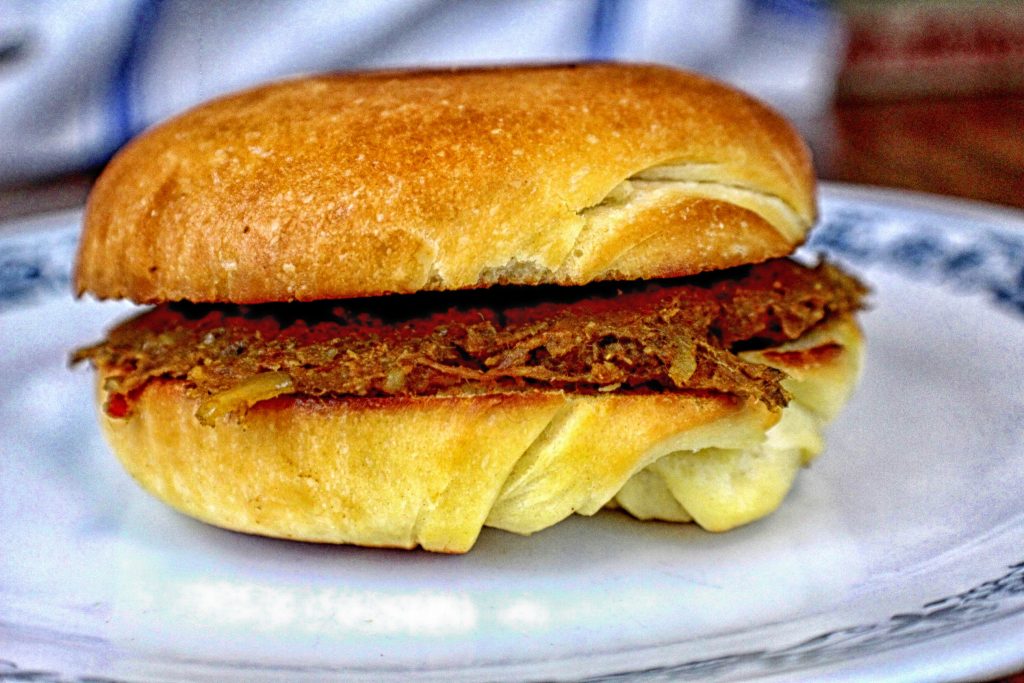

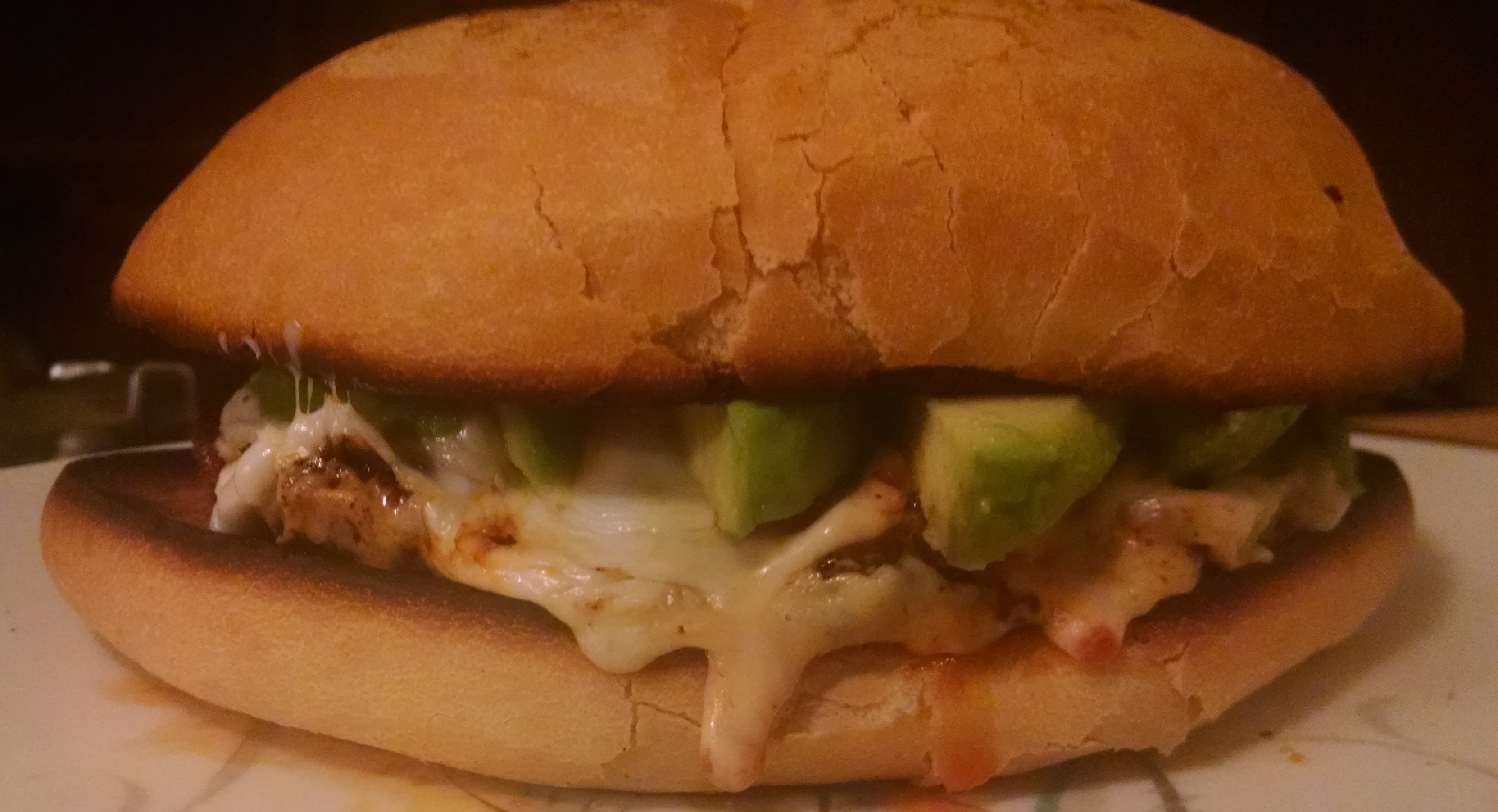
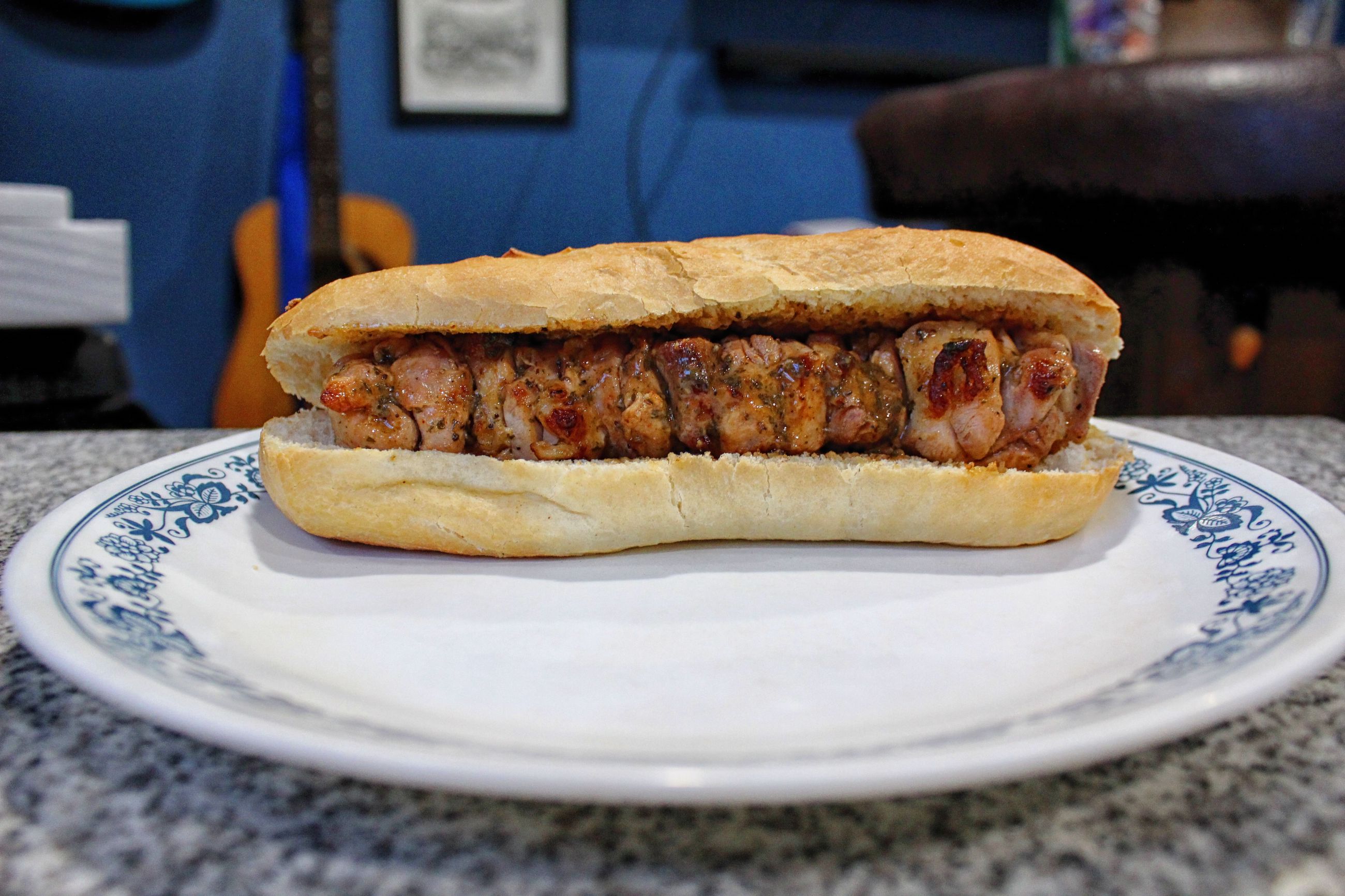






BTW that thing in a Naanchaap is a naan – there is a common (in certain areas of Bombay) round naan which is very bready – the ideal accompaniment to “gravy” meat dishes. I’ll track down some pics if you’re interested..
I’d absolutely be interested! It was tough for me to learn anything about it from way over here and I’m always interested in learning more!
Hmm. Tracked down a couple pics depicting a bready-naan that I remember from my youth…but pics don’t seem to work in comments here (when I was a kid, the “naan” I first knew actually was the bready kind.. I discovered the more conventionally known one later – which was referred to as “tandoori naan” or tandoori roti (there are variations – another is Khameeri Roti – but I digress..)
The bohri community has something they call a lamba pav (small, triangular, bready) – they make chotta kabobs (small, round), which are inserted into the opened up lamba pav, squished down, and eaten as sort of a bohri slider (not as good as it sounds IMHO 😁)
Also, BTW, your Devon experience is not unexpected – the indian/veggie versions are vada pavs and dabelis etc (also a bombay streetfood veggie sandwich – not sure if Devon has that), Anmol the exception. To the east of Western the restaurants are indian-Muslim and pakistani…Spinzer for example is a snack-based Pakistani spot, with a bunch of rolls and sandwiches (the Zinger sandwich et al – bun kabab burgers, Hunter chicken sandwiches etc..)
Immerse in Pakistani culinary bliss at this Chicago gem! From savory kebabs to aromatic biryanis, each dish is a delight. A must-visit for authentic Pakistani flavors.
Discover Exquisite Best pakistani restaurant chicago – Your Ultimate Dining Experience